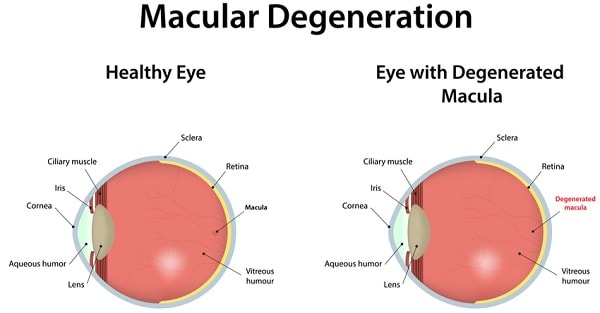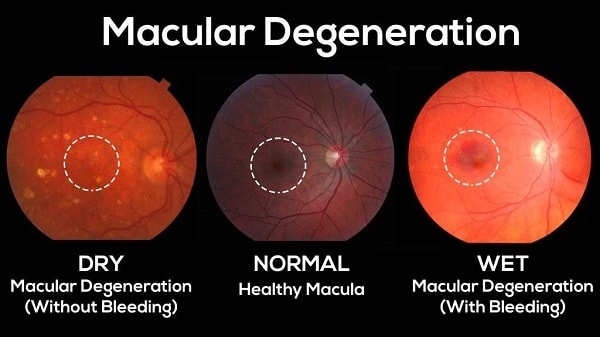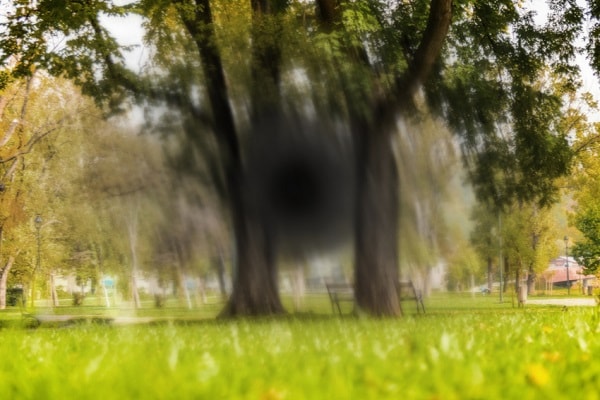WHAT YOU SHOULD KNOW ABOUT THE EYE DISEASE MACULAR DEGENERATION
It’s AMD Awareness Month! AMD stands for age-related macular degeneration – an irreversible eye disease that can have a significant impact on your long-term vision. However, early detection and proper management, including lifestyle changes can ensure you still enjoy a full life when living with AMD. In this month’s blog, our Chicago eyecare specialists will cover this, as well as the signs and symptoms to look out for, so you can be in the know when it comes to macular degeneration.
What is AMD?

AMD is the leading cause of vision loss in those over 50. It affects the retina at the back of your eye, specifically, the central part called the macula which is responsible for your central vision. This means images that are straight ahead of you cannot be seen even though your peripheral vision is clear.
Types of macular degeneration
There are 2 main types of macular degeneration: dry and wet.
Dry macular degeneration is the most common form, affecting up to 80% of the AMD population. This occurs when parts of the macula become thinner, due to age, and tiny clusters of protein called Drusen accumulate, causing a gradual decline in your central vision. Currently, there is no treatment for Dry AMD.

Wet AMD is less common and advances more rapidly than dry AMD. It occurs as a result of abnormal blood vessels growing under the retina. These vessels can leak blood and other fluids, which causes scarring of the macula. Swift progression means that vision loss with occurs much faster with Wet AMD.
Signs and symptoms
We all want healthy vision, so what can you look out for to make sure you’re recognizing symptoms as early as possible? Early stages of the eye disease macular degeneration are often symptomless, but as the condition worsens, there are clear signs to look out for, including:
- Wavy or blurred vision
- Distorted vision
- The loss of your central vision, with dark or blurry spots appearing
- Color perception changes
- The need for brighter light conditions
- Difficulty recognizing faces.

Blurred vision and dark spots in your central vision are all signs of macular degeneration
Reducing your risk of AMD
Although AMD occurs more often with the older generation, there are a number of things you can do to reduce your risk of developing AMD at any age. Some of the factors that increase your risk include:
- Eating a lot of saturated fat in your diet
- Smoking
- Being overweight
- High blood pressure & cholesterol
Reducing or resolving these risk factors can help protect your vision.It is also vital to get your eyes regularly checked by an eye doctor so AMD can be picked up in its earliest stages and you can get the treatment and support you need to manage this before it’s too late. Contact us today to book yourself in with our eye doctor in Oak Lawn.
